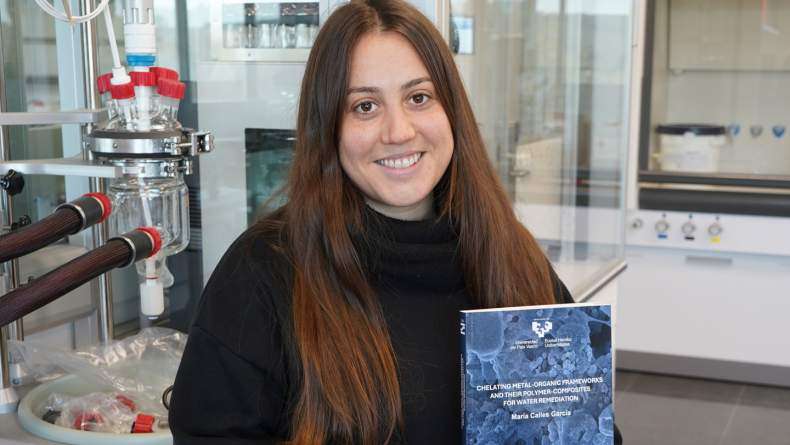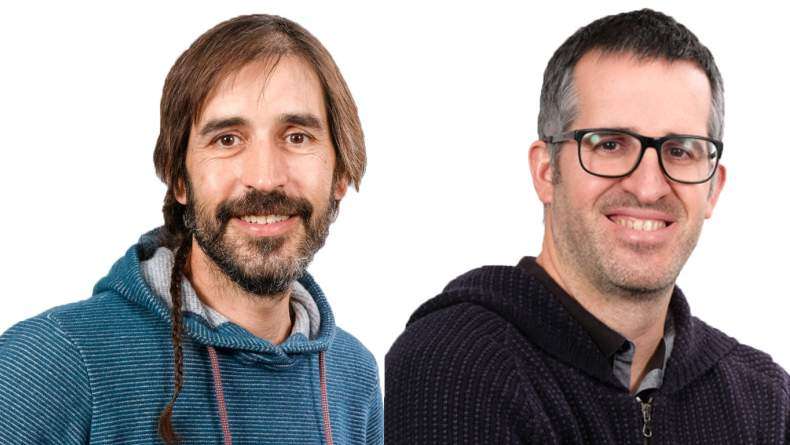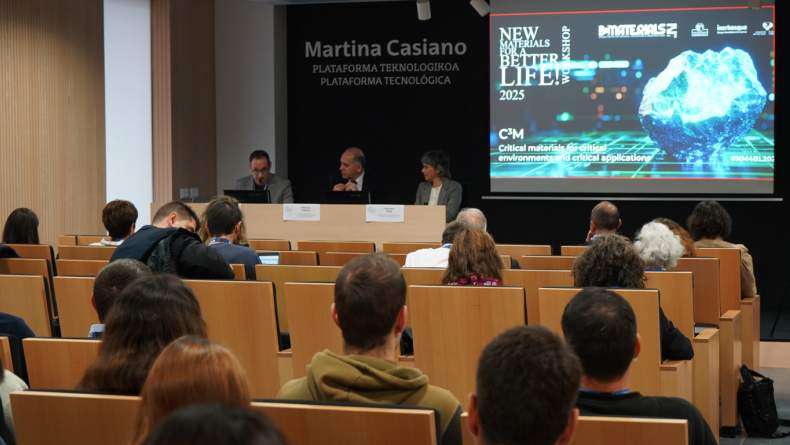BCMaterials Fortnightly Seminar #58: Irati Rodrigo & Vasileios Alexandrakis

IRATI RODRIGO
(BCMATERIALS)
The design of a new AC magnetometer
Magnetic hyperthermia is a cancer therapy, where magnetic nanoparticles (MNP) placed inside the tumour act as heat sources activated by an externally applied magnetic field. These nanoparticles increase the temperature of the tumour cells causing the destruction of the tumour. One of the most important parameters of MNP used in magnetic hyperthermia is their specific absorption rate (SAR), which is the absorbed energy per unit of nanoparticle mass. Our group has developed an accurate AC magnetometer, which allow the quantification of SAR. This magnetometer calculates the SAR measuring the dynamic magnetization with two pick up coils. SAR is obtained from the integral of the dynamic magnetization vs the applied magnetic field (generated by an inductor). This AC magnetometer works in a wide frequency range of AC magnetic field (149–1030 kHz) and with large field intensity: up to 35 kA m−1 at low frequencies and up to 22 kA m−1 at high frequencies (above 1 MHz). The main aim of this these is to design and built a new AC magnetometer that will work in higher field intensities and add a temperature controller of the sample. This will allow us to measures SAR in different temperature, which is very important to study new non invasive thermometry methods in order to measure the temperature of the tissue during the treatment. Two new AC magnetometers have been designed and studied for this purpose. I have simulated the magnetic field and dissipated power of the inductor using Finite element method (FEM) variating the parameters of the inductor, and analysing the result I have choose the best design with the optimal parameters.VASILEIOS ALEXANDRAKIS
(UPV/EHU - Dept. of Electricity and Electronics, ZTF-FCT)
“Hard/Soft” magnetic composites for magnetic recording applications
Hard disk drives (magnetic storage) for ultra-high storage densities require small grain sizes to fulfil the requirements for high signal to noise ratios. However, as the grains become too small, the bits are no longer magnetically stable. The reduction of grain size can be balanced by a large magnetocrystalline anisotropy K. Nevertheless, recording media based on highly magnetocrystalline anisotropy grains, like FePt, require a write (switching) field that is higher than the provided field by current write heads: it is the so-called writability issue. Hard/Soft” magnetic composites for high density recording were theoretically proposed to overcome the writability issue. Magnetic composites consist of two layers, one of which (“hard”) possesses high magnetocrystalline anisotropy (K), while the other (“soft”) layer has low anisotropy. The soft magnetic layer reduces the switching field and the hard magnetic layer preserves the thermal stability. Different “hard/soft” magnetic composites and the corresponding magnetization switching mechanisms will discussed.Related news
María Calles, New Doctor of BCMaterials
We would like to congratulate María Calles García for obtaining her PhDs in Materials Science and Technology from the UPV/EHU. On December 4 made a brilliant defense of her thesis titled ‘Chelating…Invited Talk with Barcelona Microelectronics Institute’s researchers (December 3)
On December 3 at 12:00 PM, in the Martina Casiano Auditorium in Leioa, BCMaterials will host senior researchers Antón Guimerà and Xavier Illa from the Barcelona Microelectronics Institute (IMB-CNM,…Invited Talk by Liu Yao on Lithium-Metal Batteries (December 2)
Next Monday, December 2, Liu Yao, professor at the Shanghai Institute of Applied Physics, will give an invited lecture at BCMaterials entitled ‘Li-Metal Batteries: From Liquid to Solid-State’. The…Success of BCMaterials’ Annual Workshop on Critical Materials
The 2025 edition of BCMaterials’ annual workshop gathered nearly one hundred participants on November 19 in Leioa to review the latest advances and discuss critical materials, their applications, and…



